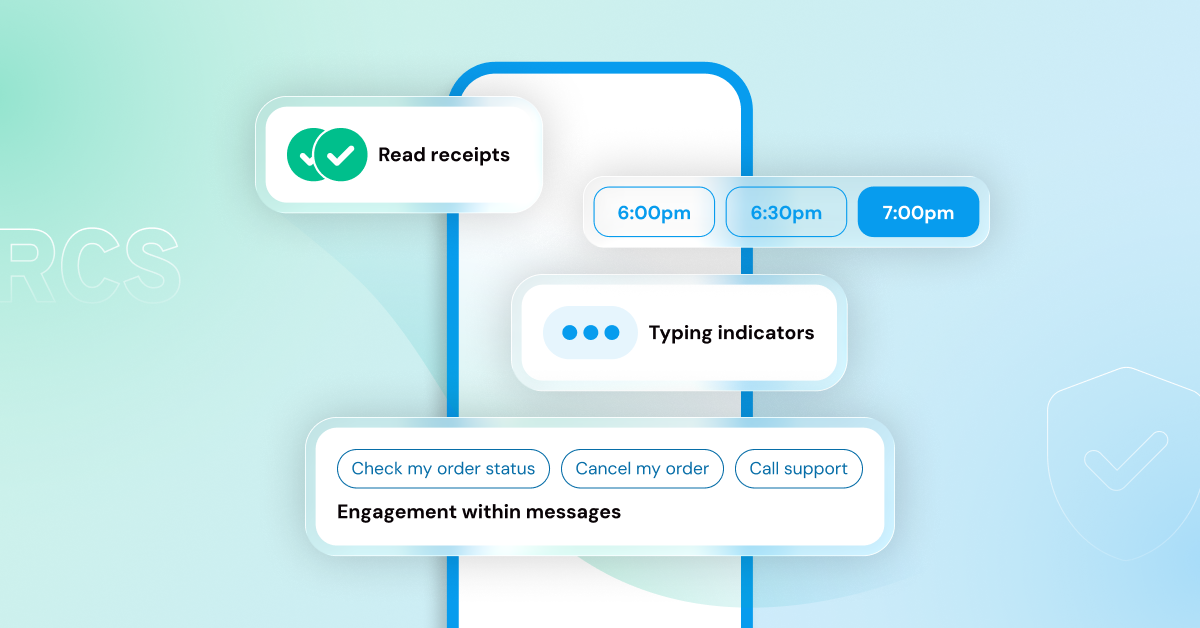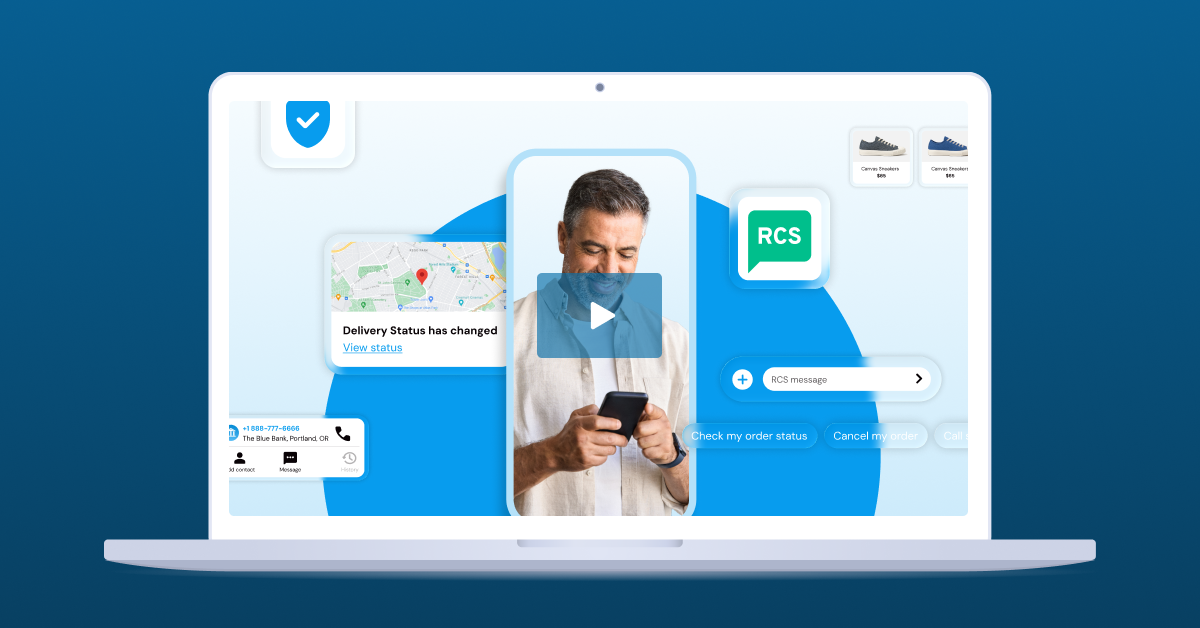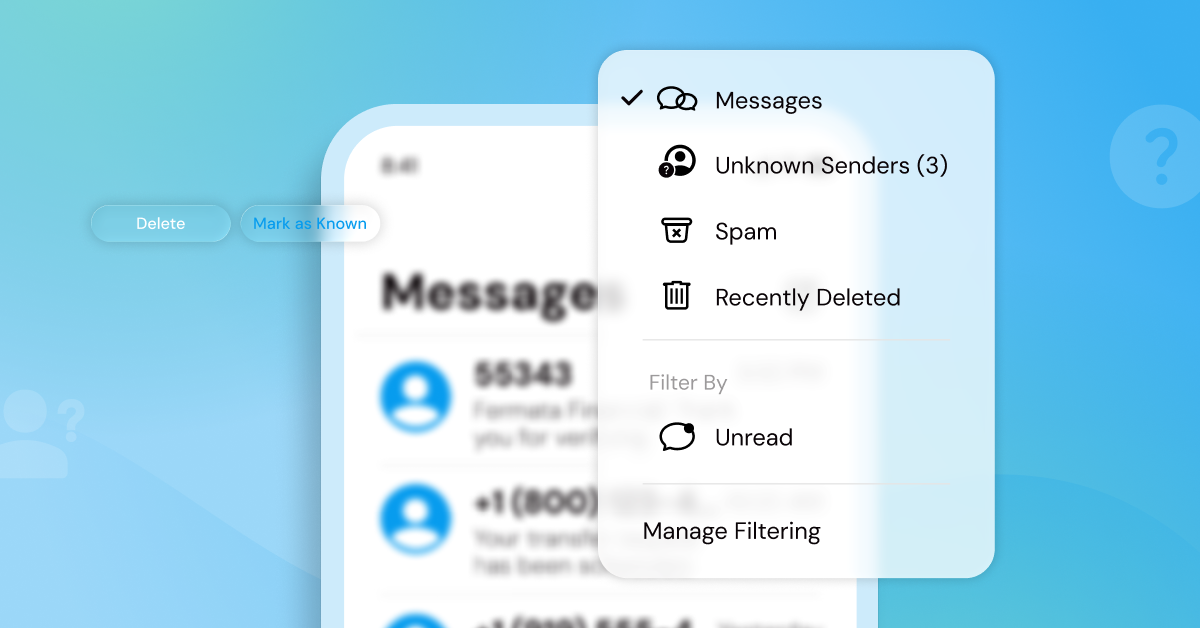So, you want to engage with your customers in the United States and Canada, and text messaging seems like an excellent channel. (SMS averages around a 98% open rate and continues to grow in adoption.)
But it’s a zoo with different messaging product options like 10DLC, Toll-Free Numbers, and Short Codes.
Three types of messaging numbers
Today’s messaging landscape can be complicated and confusing, especially when sending thousands or millions of messages at scale.
We’re here to help you navigate the decision. When choosing which messaging type, here are some things to consider. First, we’ll explore the three types of messaging for your organization.

10DLC: Establishing a local presence
What is 10DLC?
10DLC is a sanctioned business text message using local phone numbers. Sanctioned simply means businesses sending SMS and MMS over local phone numbers must register their brands and campaigns and be carrier-approved. This is often referred to as 10DLC or a 10-digit long code.
When to use 10DLC numbers
Businesses that need to show their locality often use it, such as a realtor with the same area code as the clients they serve.
The typical use case for 10DLC includes text alerts, two-factor authentication, and appointment reminders. Other two-way messaging use cases are also supported when promoting your business or answering questions to complete a sale.
In addition, users will expect a person to respond to them and often reply to messages sent on 10DLC with questions or comments, making it ideal for more personalized messaging interactions.
Got 10DLC questions?
We’ve got answers! Watch this expert webinar replay for our honest answers to the most frequently asked questions we’ve been getting through 2024.

Toll-free messaging: The convenient campaigner
What is toll-free SMS?
Toll-free messaging is a sanctioned business text message using a toll-free phone number. These ten-digit phone numbers have an 8XX prefix like 800, 888, 877, 866, 855, 844, or 833. As of September 30, 2022, all toll-free messaging traffic must be verified and carrier-approved.
When to use toll-free SMS
Toll-free SMS is often used by businesses that require high-volume messaging at scale and quickly. Businesses have used toll-free numbers for decades to allow users to avoid high fees when calling a business, and now they are practically synonymous with the “corporate phone line.”
As a result, toll-free numbers are ideal for enterprise communications because they give the impression that a business representative is on the other end. In addition, they can be voice-enabled (if they aren’t already), allowing users to escalate to a phone call directly from their message inbox.
Short codes: The ol’ reliable
What is a short code?
Short Codes are a sanctioned business text message using a 5-6 digit number. These numbers were the first Application-to-Person (A2P) messaging option and are easily recognized by end-users as being from a business. You may have received verification from a familiar number when trying to log into your account or make a purchase.
When to use short codes
Short codes are for messaging purposes only and do not support voice communications, making them ideal for high-throughput, high-volume notifications with little or no expectations for personalized conversations.
While the most common short code implementations are primarily for one-way communication, short codes can accommodate limited two-way conversational chats initiated by certain keywords (such as confirming an appointment with ‘YES’).
Toll-free vs. short codes vs. 10DLC: A comparison
Here’s a chart to help provide an apples-to-apples comparison between these three products:
Notifications
| Feature | Short Codes | Toll-free | Alphanumeric SMS |
|---|---|---|---|
| Geographic availability | Globally with country-specific codes | US/CAN | 180+ Countries not including U.S. |
| Voice-Capable | No | Yes | No |
| SMS 2-Way | Yes | Yes | No |
| Multimedia Capable | Yes | Yes | No |
| Expected Time to Market | 8 Weeks | 3-4 Weeks | Varies |
| Expense | $$$ | $$ | $$ |
Conversations
| Feature | 10DLC | Global 2-Way SMS | RCS | Over-the-top (Ex: WhatsApp) |
|---|---|---|---|---|
| Geographic availability | US (CAN as P2P) | Globally | Globally on wifi or cellular data | Globally on wifi or cellular data |
| Voice-Capable | Yes | Yes | Yes | No |
| SMS 2-Way | Yes | Yes | Yes | Yes |
| Multimedia Capable | Yes | No | Yes | Yes |
| Expected Time to Market | 1 Week | Varies | Varies | As soon as same-day |
| Expense | $ | $$$ | $$ | $$ |
What to consider when picking a messaging channel
Now that you know a bit about the options, here are some factors to consider as you choose which makes the most sense for you.
Message volume. How many messages will you be sending?
Toll-free numbers can now send the same volume of messages as short codes, and local numbers can be used for A2P messaging at varying throughput rates based on the use case. All it takes is a few special permission adjustments to your number, and you can be sending out sanctioned high-volume messages.
Cost. How much are you willing to spend?
The dedicated short code framework typically includes a monthly lease fee of over $500, plus your per-message fees. However, messaging with toll-free and 10DLC numbers typically costs less than $1 per line per month, meaning you can save thousands of dollars every year in monthly recurring costs alone.
Time to market. How long does it take?
How long does it take, on average, for your short code campaigns to be approved?²
- 58.5% A couple of weeks
- 33.7% About a month
- 7.8% More than a month
Short answer – it depends on the messaging option. The carriers must approve all messaging use cases via registration, verification, or campaign review.
Short code campaign brief review and approval takes the longest time – around 4-6 weeks.
10DLC activations are generally faster but still require A2P campaign registration to get better treatment.
Toll-free verification is required, and typically takes 3-4 weeks. It used to be that you could send toll-free traffic (at a lower throughput than verified numbers) once you submitted for verification, while your number(s) had “pending” status. That was set to end on January 31st, 2024, when all numbers would need full verified status in order to send messages.
State of Messaging 2024
Read the report
Explore our predictions for the future of business texting, see our latest survey stats, and get inspired by creative use cases.
Tune in
The State of Business Texting podcast series takes you behind the scenes of our report for live chats with industry experts.
Choose your channel
Take this handy quiz to discover how different channels can match with different use cases.
User experience. What experience are you trying to provide?
Think about the user experience you’re delivering. Short codes work great for ‘text-in’ campaigns like ‘Text DEALS to 555-55 to receive 20% off.’ They’re memorable and easy.
On the other hand, toll-free and local numbers are a number your customers may already be dialing for sales or support calls. If you’re sending messages on behalf of an entire brand, your toll-free number may be the most recognizable channel. If you’ve got a local brick-and-mortar or many locations (and your customers want to make sure they’re talking to the right one), you may see a higher response rate by using a local number your customers may be more accustomed to using.
Learn more about 10DLC, short codes, and toll-free SMS
We all know that text messages get engagement like no other communication channel. Of course, the best text messaging product for you depends entirely on your business.
Whatever you are looking to build, there is an option for you to best communicate with your customers or end-users. And, with Bandwidth’s messaging APIs, we can help you easily inject the power of text messaging into your application in just minutes.
Need a Twilio alternative?
Enterprises trust Bandwidth APIs for enterprise scalability and 24/7 support.






